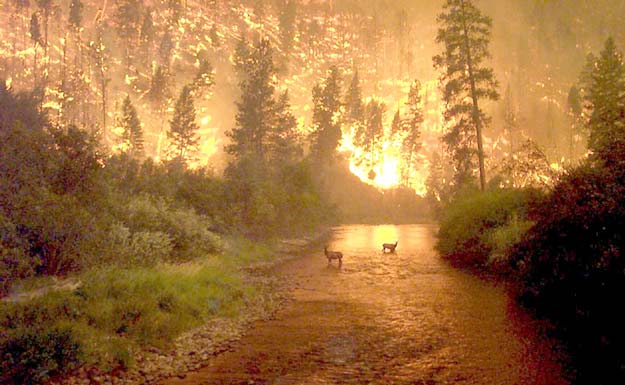
|
Explanation: Sometimes, regions of planet Earth can be seen lit up with fire. Since fire is the rapid acquisition of oxygen, and since oxygen is a key indicator of life, fire on any planet would be an indicator of life on that planet. Most of the Earth's land has been scorched by fire at some time in the past. Although causing many a tragedy, fire is considered part of a natural ecosystem cycle. The year 2000 fire season in the continental United States has been one of the most active on record, burning an area similar in size to New Jersey. Large forest fires on Earth are usually caused by lightning and can be visible from orbit. Above, stunned Elk avoid a fire sweeping through Montana's Bitterroot Valley by standing in a river.
|
January February March April May June July August September October November December |
| ||||||||||||||||||||||||||||||||||||||||||||||||
NASA Web Site Statements, Warnings, and Disclaimers
NASA Official: Jay Norris. Specific rights apply.
A service of: LHEA at NASA / GSFC
& Michigan Tech. U.
Based on Astronomy Picture
Of the Day
Publications with keywords: Earth - Fire
Publications with words: Earth - Fire
See also:
